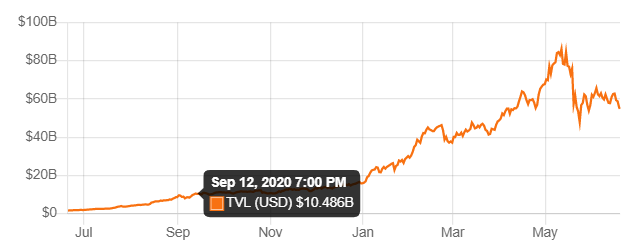
DeFi – short for Decentralized Finance – has started to become a real buzzword in recent months, with investments in the space growing by leaps and bounds. It’s doing so despite being notoriously complex and risky to actually work with – requiring users to understand complex technologies like MetaMask while doing borrow-lending in a space that features absolutely no FDIC guarantees.
But there’s clearly a strong interest in this space, and Sam Bankman-Fried, industry expert and CEO of cryptocurrency derivatives exchange FTX, offered his thoughts at the recent CryptoConnection conference hosted by Tabb Forum.
“There’s still a long way left to go,” Bankman-Fried said. “I think that there is sort of proof of concept for some things in DeFi – the borrow-lending protocols in particular are pretty cool, functional, and useful – but a lot of things are going to need the industry to do scaling.”
One of the factors limiting that scaling, and investment, is a market cap which – while respectable at around $60 billion – is difficult to grow as DeFi remains complex to actually use.
Source: DiFi Pulse. Total Value Locked (TVL) in DeFi projects
June 2020-2021. TVL measures investment in projects.
“I think there’s been proof of concept for cool products – but I don’t think there’s been proof of concept for great products,” Bankman-Fried said. “I think right now it’s not quite at that point, so the next thing is to really start building out products that feel great to use, products that that feel complete, and that don’t feel like they’re missing big pieces. We need products for people that don’t even know they’re using DeFi — things that are just a compelling product to them.”
That kind of work will likely take more institutional investment in the space – and while there’s definitely interest in the field as it continues to grow, regulated institutions still have a number of difficult questions to answer before they can really dive in.
“There’s a lot of theory that’s probably going to come out at some point, that says, basically, does this decentralize smart contracts?” Bankman-Fried said. “What about duty to KYC users? What does that even mean or look like in DeFi? These are thorny questions.”
“Institutions, especially regulated ones, are going to have a lot of trouble using DeFi as it is right now. That’s not to say they’re not ever going to use it, but there’s a lot that has to be worked out before it can get there.”
Some organizations have been looking into so-called “hybrid” solutions – primitives offering private pools on their platforms that meet these KYC and regulatory guidelines. But these may not offer a long term solution, as they have some crucial flaws.
“I kind of think they defeat the purpose of DeFi,” Bankman-Fried said. “That’s not to say they’re bad. They could be great, but I think at some point, the question is: why are you using DeFi? Why aren’t you just using Cfi? There are ways to bring this into a fully centralized product. I think the easiest thing for institutions is probably to just stick with Cfi until you’re ready for DeFi.”
Editor’s Note: DeFi questions surfaced in the financial media more strongly this week: the Tabb Forum ran an opinion piece suggesting that DeFi regulatory risk is overblown; Matt Levine covered the fall of the Iron Titanium DeFi token in his Bloomberg column; and the New York Times DealBook posted a link to a study examining the paradox of DeFi protocol risks.

